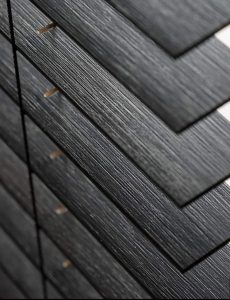The fascinating history of shading – Facts about Venetian blinds you might have never known!

The need for shade, a sense of privacy or protection from unwanted visitors has been just as relevant in the distant past as it is today. Shading technology actually has a very long history. Different parts of the world adopted different forms and roller Venetian blinds or external shutters were often simply made from local materials. We have curated the most interesting facts from the history of shading and Venetian blinds just for you.
The origins of shading
The story of shading goes all the way back to antiquity. Some early civilisations were already using simple shading solutions back then. These were usually thick pieces of cloth that were sometimes soaked in water, which helped to cool the indoor spaces to some extent. People from the fertile area around the River Nile used reeds. Ancient Egyptians became pioneers in this area, as their reed Venetian blinds could be raised and lowered.
China was enthralled by bamboo Venetian blinds
Around the same time but further east, the use of bamboo Venetian blinds began in ancient China. This material was abundant and the bamboo stalks could be tied together to create a very simple method of shading.

The magic of bamboo Venetian blinds has been around since the time of ancient China, albeit in a slightly different form
Venetian blinds were (supposedly) invented by the Persians
Let’s now skip forward to the medieval times, where a new type of horizontal Venetian blinds became quickly widespread, especially in Europe – later earning the moniker “Venetian”. Although it’s a fact that they were most widely used around Venice, they originally hail from the much more distant Persia. It was there that Venetian merchants found inspiration in this particular type of shading technology. Wood was the most common material used for manufacturing the slats for shading, followed by thick fabric. Did you know that the French call this type of Venetian blinds “les persiennes”?
The first patent for Venetian blinds
The first patent for Venetian blinds similar to what we use today dates back to 1769, when the Englishman Edward Bevan patented his “new and peculiarly constructed Venetian blinds”. The wooden slats were placed inside a frame and could partially control how much light was let into the room. Even closer to today’s Venetian blinds were those by the Parisian carpenter Cochot, patented in 1812, which allowed for a continuous change in the position of the slats. Venetian blinds with slats that are linked by a string and with tilt that be controlled with a wand began appearing around 50 years later.
Origin of the word Venetian blinds
Today, we use the word ‘Venetian blinds’ quite readily in connection with shading technology. But where does it come from in the first place? While the meaning of blind as ‘not admitting light’ first appeared in English c. 1600, some languages use another name originating from the country quick to “appropriate” Venetian blinds, France. The other name for Venetian blinds has its origins in the French “jalousie” and, as you might have guessed, it means “jealousy” or “envy”. Whether jalousie windows earned their name because they kept the lady of the house hidden away from the prying eyes of other men, or stopped the envious eyes of the neighbours, you can decide on your own.
After all, Venetian blinds are still evolving to this day, although not quite as dramatically as in the past. However, with improved manufacturing technologies, Venetian blinds are becoming easier to operate and can easily be adapted to atypical windows. Quality Venetian blinds will always be a safe bet if you need effective shading that will last for many years.
